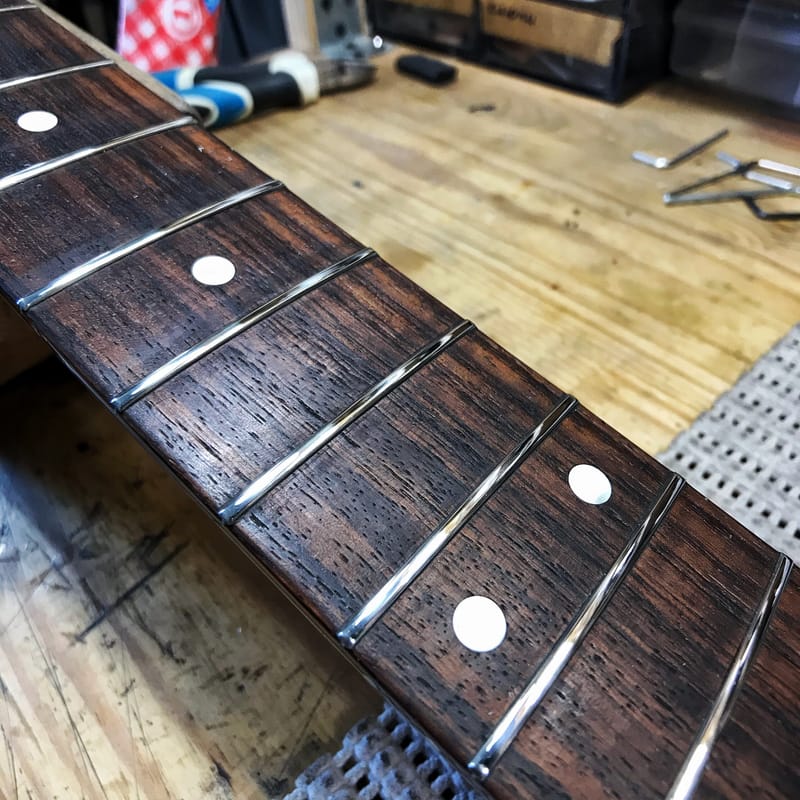Works with frets

When we do leveling guitar frets, the following actions are performed:
-Pressing and gluing the frets, this step reduces the risks of the frets bumped with time out of the fret slot and ensures a proper sound across the whole fretboard. This is especially important if there is a local buzzing of the strings or the sound is missing completely on some frets.
-Fret ends dressing; if the frets stick out and catch the hand while playing.
- Leveling of frets. This is the main part of the work, which allows you to remove wear of frets from the strings and other imperfections. In addition, sanding can compensate for minor neck distortions.
-Crowning of frets. After grinding, the upper part of the frets is not rounded, but flat, which can cause buzzing. So that the frets sound well and do not cause additional noise, it is necessary to make their tops rounded in order to obtain a single point at the intersection of the string and the fret.
-Polishing. This is the final stage in which the frets are polished to a mirror shine. This is not only for the visual component, but also helps to avoid unpleasant sounds when playing the guitar, in particular with bends.
Replacing frets involves their complete leveling, as well as repair and correction of fretboard defects, if necessary. Unvarnished fretboards can be additionally covered with oil or wax. When replacing frets, you can change the radius of the fretboard if needed.